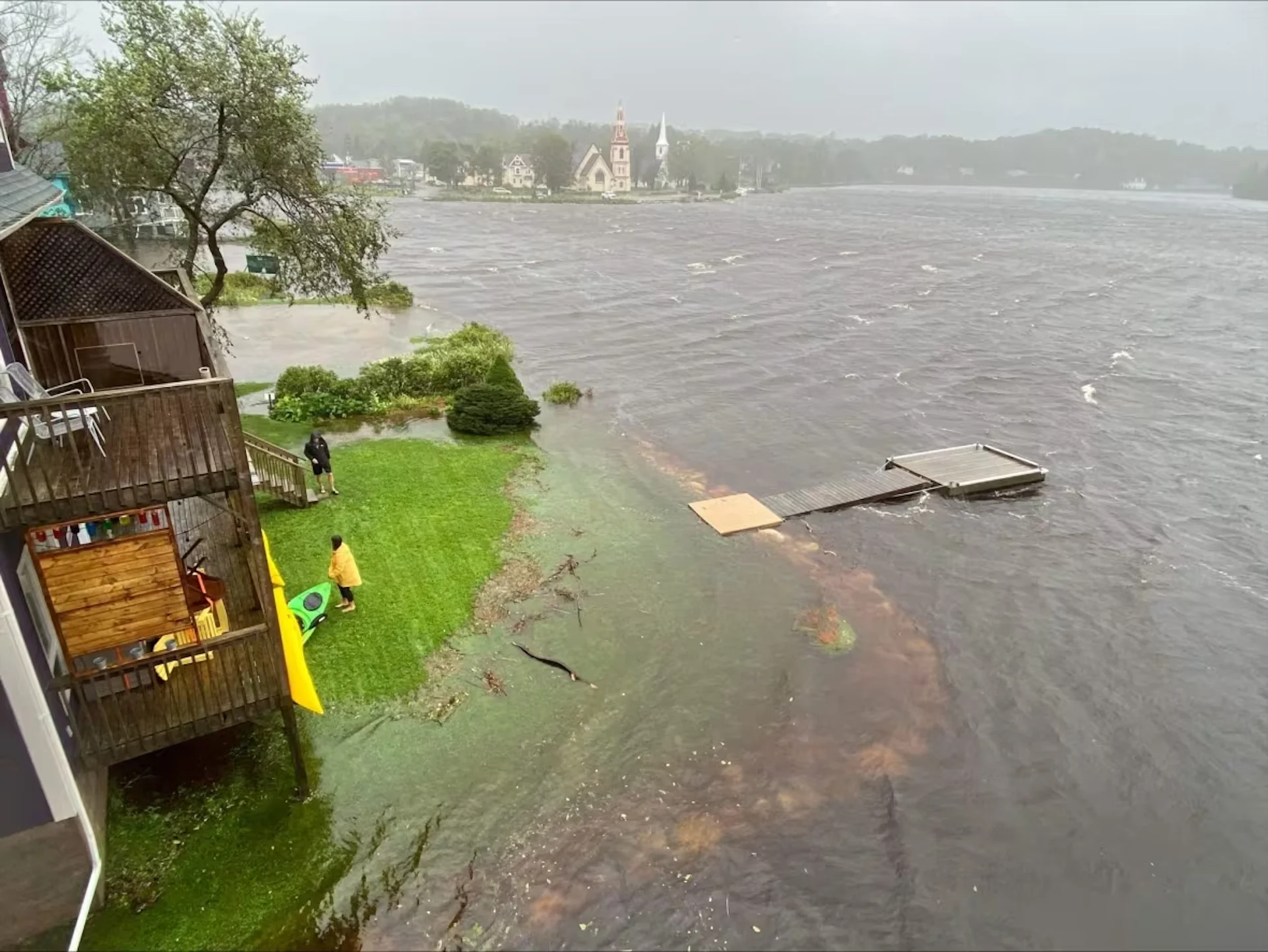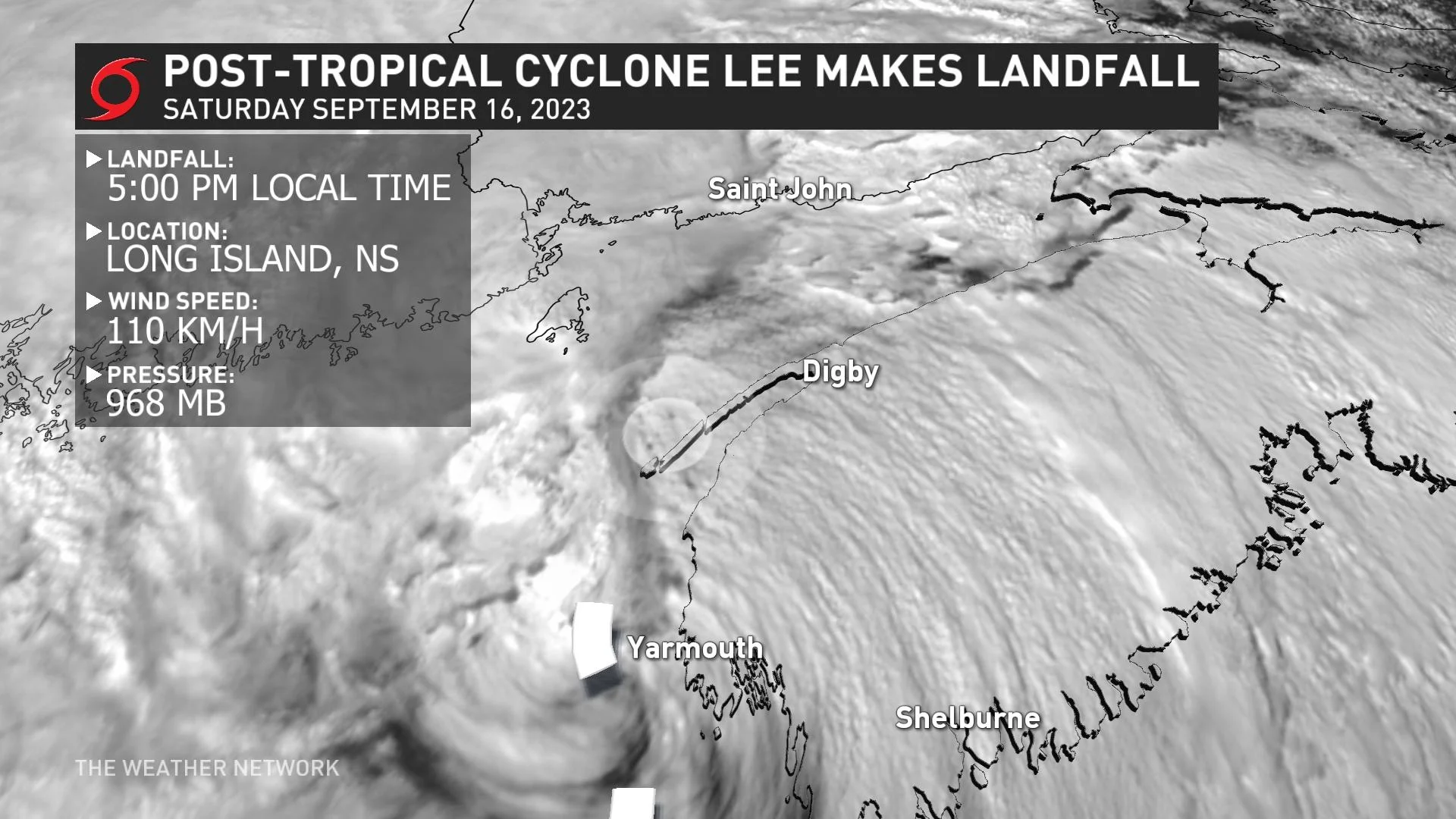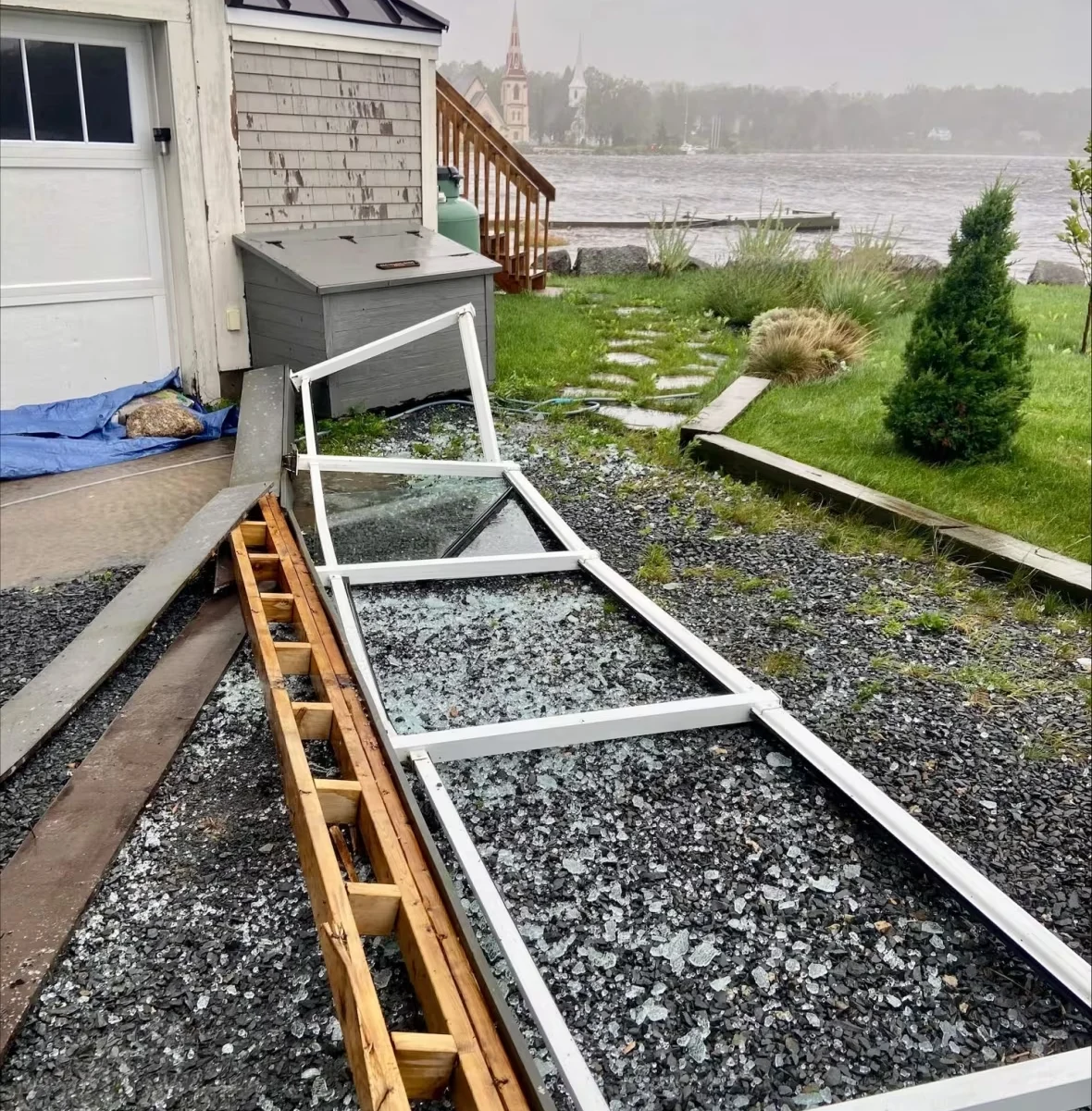
Storm surge, winds cause damage in N.S. South Shore communities
Visit The Weather Network's hurricane hub to keep up with the latest on tropical developments in Canada and around the world
Communities along Nova Scotia's South Shore are assessing damage after high tide during post-tropical storm Lee caused flooding and washouts.
Mahone Bay resident Craig Stewart said storm surge peaked during high tide just before 10 a.m. Saturday.
Stewart said the water crested at about 1.5 metres above normal high-tide levels, causing some flooding on properties along Main Street.
PHOTOS: Powerful Lee leaves impactful mark on the Maritimes, one injured

According to Stewart, wind is the cause of much of the damage so far.
"We've seen one house had a tree fall on it right on Pleasant Street near downtown," he said.
"Fire crews have been active responding to downed power lines and there's been minor damage to properties. I lost a railing at about 8 a.m."
Boats broke away from moorings
He said most of the damage he has seen has been minor.
Stewart said the southeast winds are the "worst possible direction" as Mahone Bay is normally well protected and sheltered by the islands in the bay.
He said Lee has been pushing in water more than has been seen in years.
Noting that another high tide was expected tonight, Stewart said the winds are not expected to be as strong and he is hoping the storm surge is less severe.
Mahone Bay Mayor David Devenne said the town has been without power since 7:30 a.m.

Most of the storm damage in Mahone Bay appeared to be minor, according to Stewart. (Craig Stewart)
Devenne said the town has its own power utility and its own crews but they were waiting until the winds died down before going out.
He said the only road disruption in the town was caused by a tree that fell on Clearway Street. Roads in and out of the town are not obstructed, he said.
SEE ALSO: Fiona versus Lee: How powerful but different these hurricanes are
Two boats in the bay broke free from their moorings, he said, but they do not appear to have suffered a lot of damage.
He said one of the boats was a catamaran that went up on the rocks.
He said this will be the first real test of the town's project that uses a tidal wetland with native plant species to reduce storm surge.
"We're waiting now ... what kind of damage, if any, this system hopefully prevents," he said.
From his vantage point, Stewart said, the so-called living shoreline was intact and while winds were battering nearby rocks the water near the shoreline project was relatively calm.
Queens County seawall damaged
Elsewhere on the South Shore near Liverpool, storm surge and wave action damaged about 20 metres of the seawall on Shore Road that led to the road being obstructed, according to Dan Leopold, district director for Western Nova Scotia with the Department of Public Works.

Washouts have been reported at Rissers Beach in Petite Rivière, south of Lunenburg. (Submitted by Julie Whalen )
Leopold said staff will be unable to inspect the area until the storm subsides.
"We added some additional armour stone over the last number of years," he said. "That stone appears to be in place, so the damage may not be as bad as initially thought."
He said wave action pushed some of the rocks into the road.
At Western Head causeway, Leopold said there was flooding during high tide that has since receded.
Leopold said he could not give an estimate on how long the roads will be closed until the storm has subsided. But he does not anticipate any major repairs.
'Current was moving upriver'
Crousetown resident Donnie Bolivar said he drove along Petite Rivière Road earlier in Saturday to see what was happening in the nearby coastal communities.
"Where the [river] runs into the estuary into Green Bay ... it looked like the actual current was moving upriver instead of downriver at the very mouth," he said.
"It may have been a combination of the high tide and may have also been the fact that there was a surge happening."
He said rocks and debris made the road after the resort community of Green Bay impassable.
Bolivar said he turned around and drove to Rissers Beach, where the waves had pushed water almost up to the highway.
He said he then drove along Highway 331 past Crescent Beach where the parking area was "overflowing with water and debris."
Meanwhile, Darlene Norman, the mayor of Region of Queens Municipality, advises people in the area to stay home instead of venturing out in the storm.
Norman said comfort centres will be open Sunday after the storm passes, but she said in the meantime she's making up a couple of beds at her own home in Port Medway to house seniors who live nearby and don't have access to a generator.
"Look out for your neighbour," she said. "Keep yourself safe."
This article, written by Vernon Ramesar, was originally published by CBC News on September 16, 2023. It contains files from Nicola Seguin.









